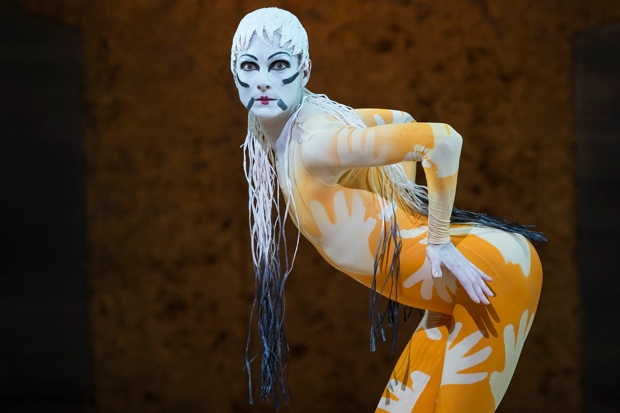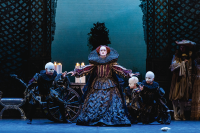There was a time when the term ‘world première’ was not as fashionable as it is these days. Great works simply ‘premièred’, and their artistic status was not diminished by the fact that the opening had not been advertised as a globally significant event. Which is what ‘world première’ implies, even though it is seldom the case. The term has a sensationalistic ring to it, and should therefore be used carefully and sparingly. According to a recent press release, David Dawson’s The Human Seasons is the second of the five ‘world premières’ that the Royal Ballet will perform this season. Fortunately, this new creation deserves global recognition and admiration, for it is a splendid example of theatre and choreographic composition.
Dawson’s dance-making stands out for the inventive appropriation, manipulation and use of both the classical and neoclassical canons. His choreography is refreshingly innovative without ever being unorthodox just for the sake of it. Central to the performance is a seamless outpouring of well-considered, theatrically surprising ideas and an extraordinary use of space. Thanks to both, the overall effect is of a dance that flows through a constant crescendo of engaging ideas. There are thematic reiterations, but their use never compromises the breadth of the choreographic development. Seamless action and full use of space — which gives the impression of the action starting and continuing in the wings — are distinctive traits of that northern European choreographic school that Dawson operates artistically within. Yet, there is more to The Human Seasons than the application of a particular choreographic school. The work, inspired by Keats’s verse, addresses facets of human emotions. The theme is not a new one, and has often been chosen by other famous dance-makers. Here, however, the illustrations of different moods is never rendered too graphically, and the ‘seasons’ of the title conjure up a range of intense atmospheres.
This five-star choreography is matched and complemented by a five-star score by Greg Haines. I wish I had both the expertise and the space to comment more deeply on his intoxicating music, as I feel it requires a review of its own. The linear, imposing but never intrusive sets, by Eno Henze, and the deceptively simple-looking costumes, by Yumiko Takeshima, added greatly to the success of the whole.
The dancing, too, was superb, with a galaxy of stars — Lauren Cuthbertson, Melissa Hamilton, Sarah Lamb, Marianela Nuñez, Edward Watson, Eric Underwood, Steven McRae and Federico Bonelli; and super soloists: Olivia Cowley, Itziar Mendizabal, Beatriz Stix-Brunell, Johannes Stepanek and Dawid Trzensimiech — that brought joy to every balletomane. The ‘world première’ was cogently sandwiched between Wayne McGregor’s Chroma, danced to perfection by some of the same artists, and Kenneth MacMillan’s 1962 Rite of Spring.
Each work provided useful glimpses into crucial moments in the evolution of modern ballet — namely ballet across the 20th and the 21st centuries. MacMillan’s Rite is, arguably, one of the first works to rely successfully on a calibrated and ingenious combination of non-balletic, even pedestrian movements with the classical idiom. Led by Zenaida Yanowsky, in the role made famous by Monica Mason, the work remains to date a historical turning point, even though some of the typical early-1960s features might not be everyone’s cup of tea. Likewise, Chroma is the quintessential example of that complex research that modern and postmodern dance-makers have undertaken in approaching ballet. All in all, a very good programme.






Comments